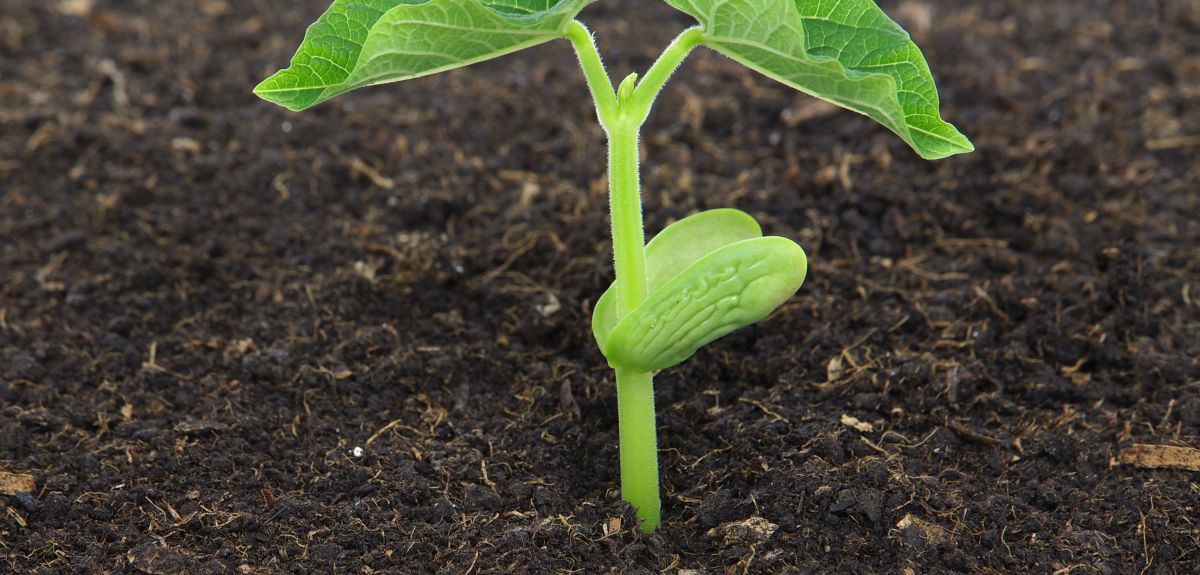
Image credit: Shutterstock
Shooting the breeze: how parts of a plant can 'talk' to one another for the benefit of the whole
It has been known for some time that plant roots can communicate with plant shoots. Now, a new paper from Oxford researchers (working in collaboration with researchers from the Chinese Academy of Sciences in Beijing) tells us how.
Professor Nick Harberd, Sibthorpian Professor of Plant Sciences at Oxford, spoke to Science Blog about the work.
'The fact that plant roots communicate with plant shoots is in many ways not surprising. Plant shoots incorporate carbon (as CO2) from the air, while plant roots extract mineral nutrients (for example, nitrate or phosphate) from the soil. Coordination of these activities is likely to be selectively advantageous, because it enables the whole plant to optimize its metabolism and growth. But the mechanism of communication has, until recently, been relatively unknown.
'Our paper shows that communication is achieved via movement of an agent from shoot to root. This agent is a protein known as HY5, a kind of protein known as a "transcription factor" that can activate, or "switch on", genes. HY5 was already known to control rates of photosynthesis (CO2 capture) in the shoot. Our work shows that HY5 acts as an agent of communication between shoot and root by moving through the phloem vessels (part of the plant vascular system).
'HY5 travels from shoot to root, and when it reaches the root it activates a number of genes in root cells, including those genes that encode the nitrate transporters that extract nitrate from the soil. This activation is also dependent upon sugars (a measure of CO2 capture) that also travel through the phloem from shoot to root. Thus, movement of HY5 and sugars from shoot to root increases nitrate uptake by the root.
'Our use of genetics in this research has enabled us to discover things previously unknown. We screened for mutants that had reduced shoot-root communication. The logic here is that the mutants would lack genes that controlled shoot-root communication, thus allowing us to identify the genes which, in normal plants, control that communication. One of our mutants identified a gene encoding the previously well-characterised HY5 protein. What we discovered using this technique was that HY5 moves from shoot to root, something new that hadn’t previously been known to be a property of HY5.
'In terms of fundamental science, this new knowledge significantly advances our understanding of how plant shoots and roots communicate with one another, and especially how that communication coordinates whole-plant growth and metabolism. This is just the beginning of what is likely to become a major new area in fundamental plant biology.
'In terms of application, HY5 was first identified as a protein that regulates the growth of plants in response to light signals. Most crops (for example, wheat, rice or maize) are grown in relatively dense plantings in which individual plants tend to shade one another. Our findings mean that HY5 can now become a target for breeders to increase HY5 activity in the roots of shaded crop plants, thus improving uptake of nitrate from the soil.
'This is a major objective for plant breeders worldwide as it will increase the efficiency with which crops use fertilizer, reduce the damaging ecological impacts of fertilizer run-off from fields, and in general contribute to the environmentally sustainable increases in crop yields that we need to feed the growing world population.'
The paper 'Shoot-to-Root Mobile Transcription Factor HY5 Coordinates Plant Carbon and Nitrogen Acquisition' is published in Current Biology.